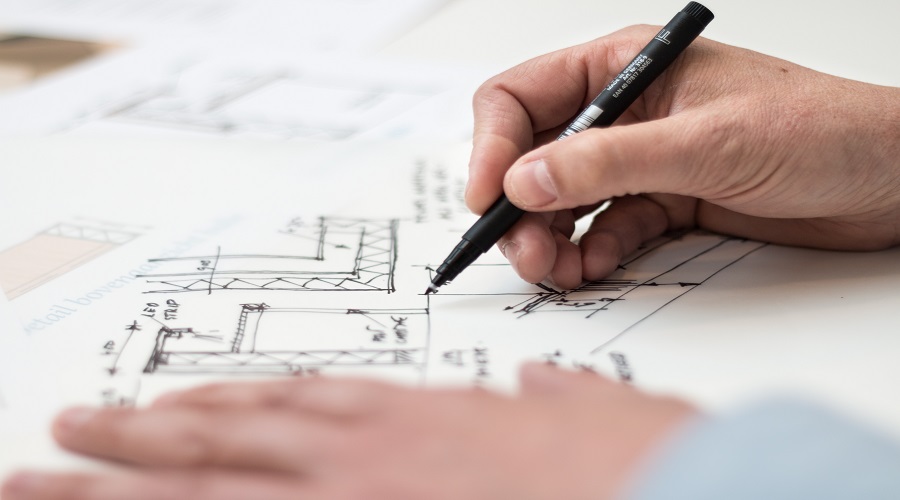3D modeling through computer-aided design has revolutionized the way we look at designing buildings. Due to sudden popularity, CAD software might seem like a new addition to a designer’s toolbox. However, these programs have been used by experienced designers for decades. They have proven themselves much more reliable than the old pen and paper method. Over the years, CAD software has been improved on quite a bit. Now the only difficult decision you can make when it comes to design software
Table of Contents
What does it have to do with the business?
That is all well & good, however, what does it mean for a small construction business?
All of this evolution and change in CAD and the 3D modeling software simply means that the construction business has got a ton of the options of CAD software to opt from.
The home designer, for instance, goes on to use CAD to design the houses and then sends all those designs to a builder. A furniture maker or appliance, meanwhile, makes use of CAD software, which can animate and render designs so the engineers may visualize their very products.
- If you are a construction manager, you need to look beyond the 2D CAD software, which does the floor plans to the software alternatives that may also render in the 3-D, letting one create complete building models.
Four things to look at when finding the right CAD software
Numerous CAD products are available for the construction industry, and one may not know exactly where to begin.
Do not worry; here is the compiled list of four things to look at when evaluating the CAD software, paired with the question to ask the potential vendors to make sure their solution goes on to meet your business requirements.
1. Compatibility helps quite a bit
Having the best software can mean the difference between your project taking weeks and it taking months to do. Having a 3D modeling software that is easy to work with won’t mean much if you can’t convert it properly. If it can’t be moved from one system to another relatively quickly, you’re going to lose a lot of time trying to compensate for that.
It would be much more convenient if you simply found a software that is already popular in your industry. If you’re lucky it might even be compatible with your supplier community. Importing files to other systems is a crucial aspect of actually making use of those work files.
You shouldn’t have to guess or test every software for this kind of compatibility. The best solution would be to find a CAD system that supports all international standards. Your ideal program should support the most common file types such as STEP, VDA, and IDF.
2. A program that is easy to learn

Getting to know your CAD software is extremely important if you wish to make the most use of it. However, you shouldn’t have to waste months of your life learning the intricacies of software that is badly optimized. If you’re familiar with the basics of 3D construction modelling, you should be able to adapt to new software in a short timeframe. Something that is too complicated to operate shouldn’t even cross your mind
Look for something that is easy to pick up for someone with experience. It has to be a piece of software that is very intuitive to use. A consistent user interface would be a good sign for a piece of CAD software. Everything from the design to the flow features should flow as smoothly as possible during usage. If your program of choice has a lot of complex features, ask the vendor if they offer customer support and onboard training. Programs like TinkerCAD are at the forefront of easy-to-use products.
3. Built-in functions are lifesavers
A good piece of software isn’t complete without built-in programs and functions that help it do its job. They have numerous uses that can make collaborative efforts and teamwork much easier. If you have more than one designer, working on several projects could lead to mistakes being made. It’s very easy to overwrite a project that someone else has been working on by accident.
Luckily, there are programs and apps to prevent this. CAD software like autodesk fusion 360 have automatic storage functions that will save your work and help you better organize projects. These functionalities will stop you from worrying about your designs and they will help you focus on your current work. This will lead to an increase in efficiency and productivity.
4. Free isn’t always so bad

When it comes to cost-saving, there’s hardly something as efficient as a free program. Investing in paid CAD software is always going to be a sound decision, but you shouldn’t write off free software just yet. There is a multitude of free CAD software options that can help you get an even better understanding of CAD and 3D modelling in construction. Open source programs like openSCAD are a great way to start off your journey into free CAD software.
Learning and experimenting with free software can lead to some interesting results. When you’re paying for the software you will often be limited by the fact that you want to start working on it immediately in order to make it worth the price. With free software, you can start by playing around with the interface and getting to know it before actually making projects. You can learn a great deal about new techniques by using different software.
Conclusion
Whether you’re a rookie designer looking to start making large projects or an industry expert that is looking for a refined choice, picking the right software can be a difficult decision. There are many options to choose from and the differences don’t seem too large when you first start experimenting with the software. They were created with the same purpose in mind, but their methods can vary. If you’re looking to create the perfect 3D model, you should try out as many options as possible until you find your perfect match.

Alex is fascinated with “understanding” people. It’s actually what drives everything he does. He believes in a thoughtful exploration of how you shape your thoughts, experience of the world.



